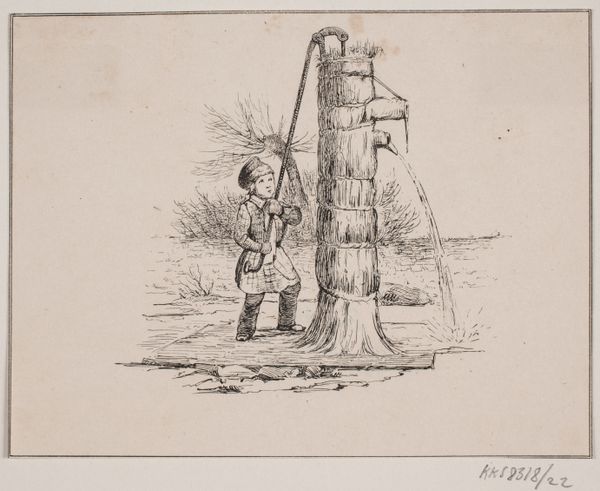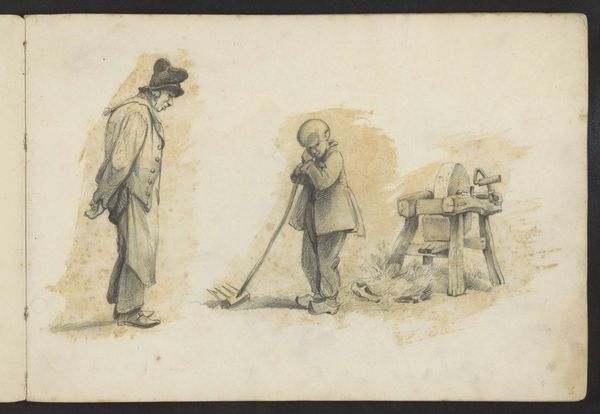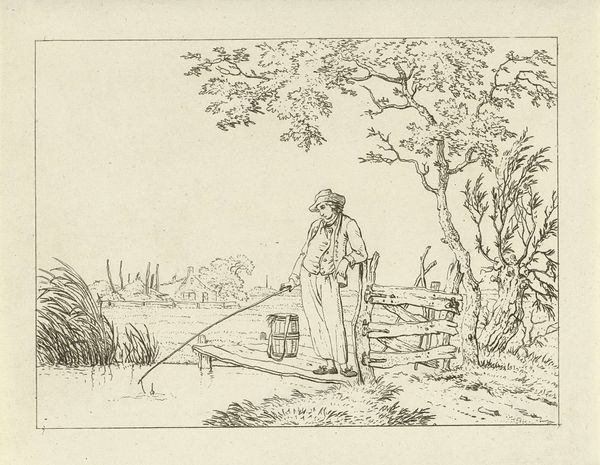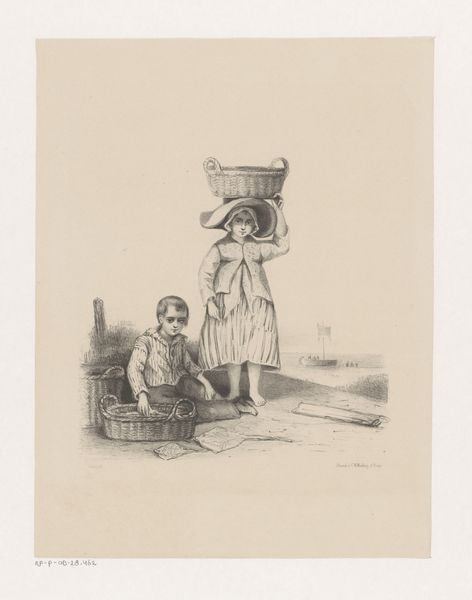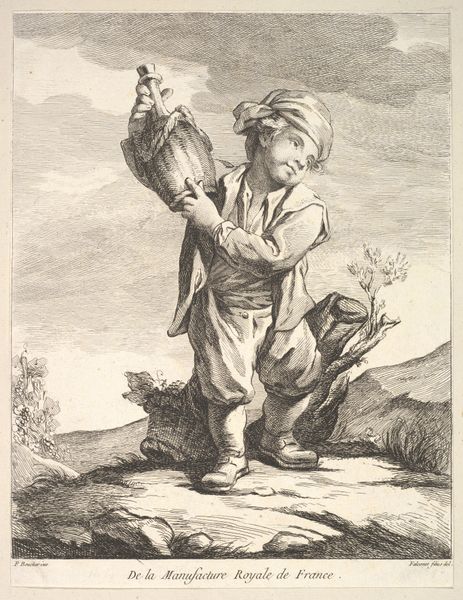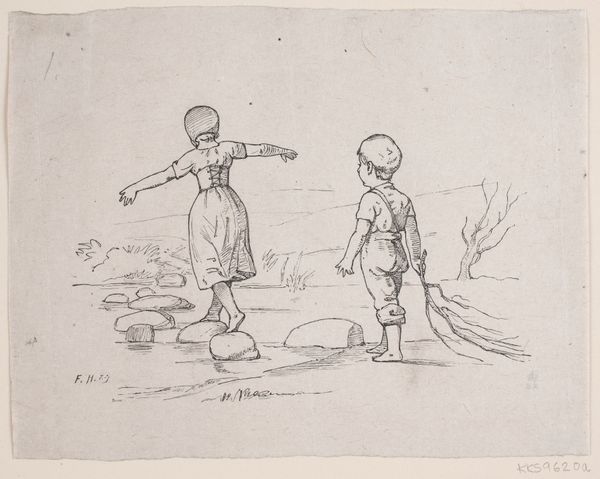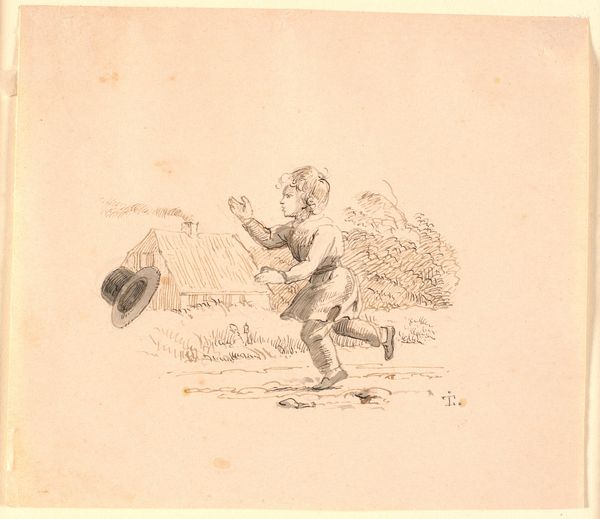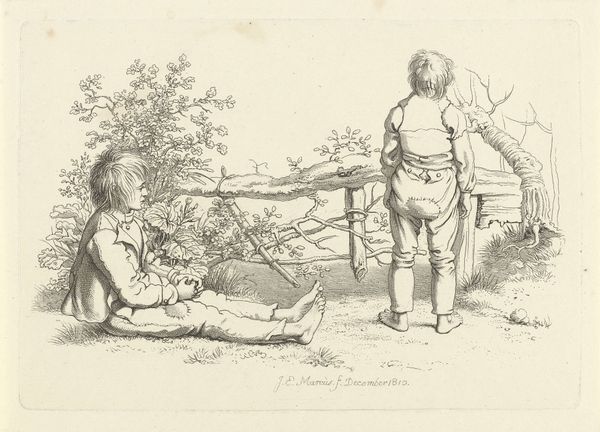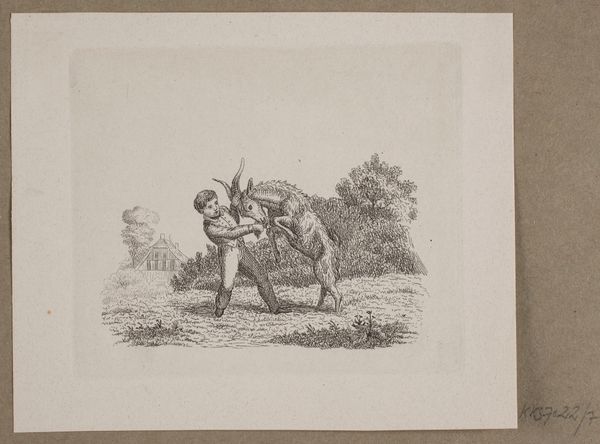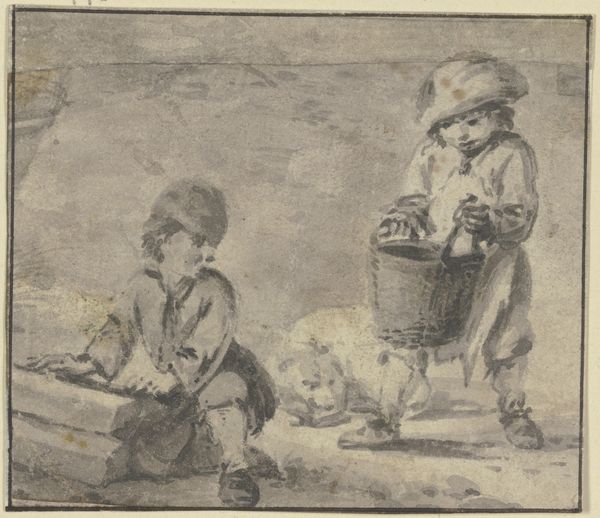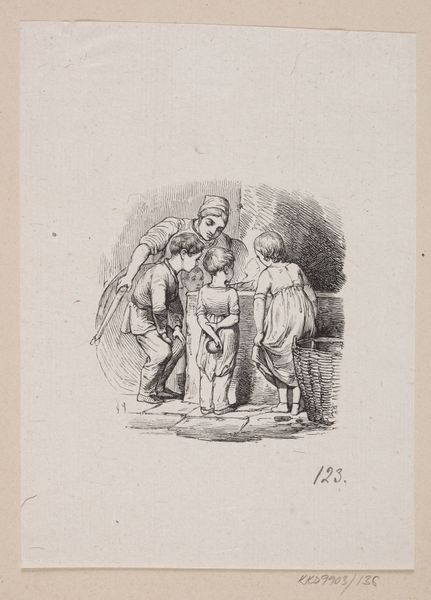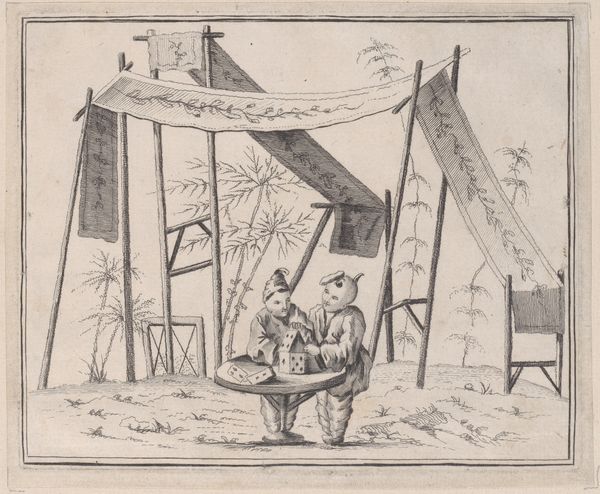
Posten. Illustration til Kaalunds "Fabler for Børn". Se kommentar fra arkkatalog. 1843
0:00
0:00
drawing, pencil
#
drawing
#
pen sketch
#
pencil sketch
#
landscape
#
figuration
#
romanticism
#
pencil
Dimensions: 97 mm (height) x 123 mm (width) (bladmaal)
Curator: This is "Posten. Illustration til Kaalunds "Fabler for Børn", created in 1843 by Johan Thomas Lundbye. It's a pencil and pen drawing, quite delicate, isn't it? Editor: It does feel delicate. A whisper of a world. Almost dreamlike with the starkness of the water pump against the boy drawing water. Melancholy, perhaps? The landscape is quite bare. Curator: Indeed. The bareness mirrors a certain austerity prevalent in Romanticism. Look closer at that water pump – do you see its structure? It is bound, almost like the boy himself is constricted within society's expectations. Editor: Ah, yes, the binding! Woven from the ground up to produce water from the earth… Water, traditionally a symbol of purification and life. Is it that his toil at the pump reflects on this cyclical burden of the human experience? The weight of his task seems heavy for such a young figure. Curator: Lundbye captures that tension beautifully, doesn't he? Think about it as a fable—the piece was designed as an illustration for one. The boy operating the water pump isn't simply drawing water, but perhaps extracting something deeper, a life lesson, maybe from an unyielding world. Editor: So, the visual allegory could symbolize the labor and effort required to obtain not just water, but knowledge and meaning from the world. The stream pouring from the water spout signifies an emotional outflow made available to him if only he's brave enough to pull water from stone. Curator: Precisely! He pulls back on that spigot for the sake of his people. Perhaps for the land to grow in order for anything at all to flourish. It makes you ponder what burden children from ages ago had to shoulder to keep their lands thriving and flourishing. Editor: Looking again at the drawing, I think it highlights that dichotomy. Lundbye uses such fragile, transient materials—pencil and pen—to represent such a fundamental act. Curator: Which perhaps highlights the fragility of childhood in itself, a delicate state shaped by burdens imposed or met with the romanticised nature that surrounds us. Editor: Exactly. I come away contemplating cycles – the cycle of nature, of burden and liberation, of youth confronting age. A rather powerful statement housed within something so subtle. Curator: Yes, I see it as an homage to perseverance and hope, elegantly sketched for eternity.
Comments
No comments
Be the first to comment and join the conversation on the ultimate creative platform.
